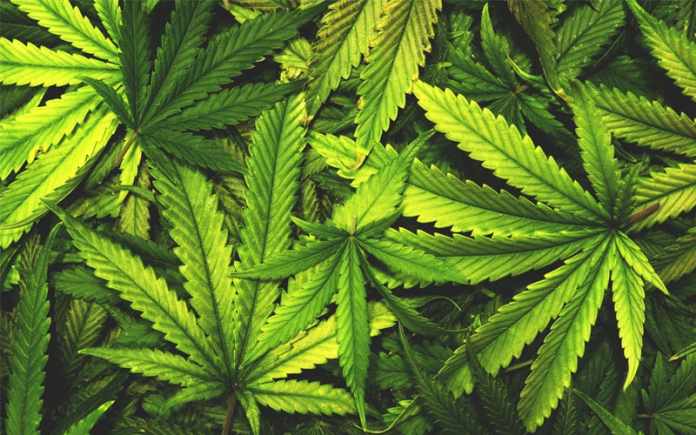Slowly but surely, a growing number of nations around the world are legalizing cannabis. In fact, analysts expect the legal marijuana industry to expand to $57 billion by the year 2027.
There’s been a lot of talk about cannabis lately. Accordingly, you may want to know a bit more about the anatomy of a cannabis plant.
Marijuana plants have several components. Many of those components are found on other plant species.
For example, cannabis plants grow on long, skinny stems. However, they stand out for their large, well-known fan leaves.
These leaves extend from a part of the plant called nodes. However, there are a lot more parts to a cannabis plant.
For an informative guide on cannabis plant anatomy, keep reading.
The Parts of a Cannabis Plant
The most significant part of the cannabis plant for consumers is its flowers, also called buds. Here, unique configurations emerge.
For example, you’ll see fiery orange hairs and sugary crystals. You’ll also see chunky buds enveloped by minuscule leaves.
Marijuana seeds come from female cannabis plants. They carry the genetics for both male and female plant offspring.
The seeds germinate and sprout, forming a taproot. Eventually, the taproot will become the main root that anchors the plant.
A Detailed Look at Cannabis Plant Anatomy
There are many parts of a cannabis plant. The following offers a closer look at the various parts.
Cotyledon Leaves
The cotyledon leaves are the first leaves to grow from seeds following germination. They grow together in pairs.
Cotyledon leaves are a sign of successful germination. They indicate that a plant is likely to grow strong and healthy.
Roots
Cannabis roots grow downward from the primary stalk of the plant. They’ll extend down into the soil.
Cannabis roots that grow from seed are call taproots. Taproots are the lifeline of a cannabis plant.
They pull water and oxygen into the plant. In this way, taproots enable cannabis plants to become strong and healthy. Growers also add a fungus called Mycorrhizae to cannabis plant soil to help improve its root system.
Stem
The main stem of a marijuana plant is also called a stalk. It grows straight up out of the root system.
The stem supports all the lateral branches of the cannabis plant. It also gives the plant stability and structure.
After a cannabis plant grows around five nodes, growers might cut off the top. They’ll trim the top of the stem to force the plant to grow out laterally. In this way, growers can produce more bud sites.
Branches
The branches of a cannabis plant grow out of the main stem. They support the fan leaves and buds.
Usually, growers will train a cannabis plant by topping the branches. This practice also helps create more bud sites.
Node
The node of a cannabis plant is the point where a branch grows from the main stem. Alternatively, a branch may grow into another branch.
Sometimes, fan leaves and buds can grow on nodes. However, this doesn’t happen in every instance.
A node is helpful in determining the sex of a marijuana plant or pre-flower. Here, you can observe the beginnings of male and female sex organs.
In between the nodes, there’s an area called the internodal spacing. Growers observe this area to get a sense of whether the plant will grow short or tall.
Fan Leaves
The fan leaves are probably the most well-known part of the cannabis plant—with the exception of the buds. The triangular, jagged edge leaves are iconic around the world.
Fan leaves to capture light for the cannabis plant. Also, they usually carry little to no resin. Despite their notoriety, growers usually discard cannabis fan leaves when trimming the plant.
Sugar Leaves
Cannabis sugar leaves are small. They’re coated with resin that forms round buds.
Growers will typically trim sugar leaves during harvest. However, they’ll save them for other products. These products may include pre-rolls and cannabis extracts.
Flowers
Cannabis flowers are the most popular part of the plant. These parts of the plant are called buds.
Buds are the fruits of labour for growers and the product that people know and love. They contain cannabinoids and turpentines that create the recreational and medicinal effects of marijuana.
Buds only grow on female cannabis plants. Growers must dry them before they’re fit for consumption.
Cola
The cannabis cola is also called a budding site. This area is where clusters of buds grow together tightly.
Smaller colas might grow along the budding sites of lower branches. Meanwhile, the main cola will typically form at the top of the plant. The main cola is also called the apical bud.
Bract and Calyx
The bracts encapsulate the female reproductive structures of the cannabis plant. They look like green tear-shaped leaves.
The leaves are heavily covered with resin glands. The glands produce the largest concentration of cannabinoids among all parts of the plant.
Meanwhile, cannabis calyx is invisible to the naked eye. The structure is a translucent layer that forms over the ovule of a flower base. Also, they’re enclosed by the bracts.
Stigma and Pistil
The cannabis pistil contains the reproductive parts of the flower. It’s also quite vibrant. The pistils have bright, hair-like strands called stigmas. The stigmas collect pollen from the males.
Trichomes
Cannabis trichomes are minuscule. Yet, they’re hard to miss.
The trichomes form a blanket of crystal resin on the cannabis bud. The resin secretes through translucent, mushroom-shaped glands. The glands are located on the plant leaves, stems and calyxes.
Trichomes are clear, bulbous globes. They ooze aromatic oils called turpentines as well as therapeutic cannabinoids such as THC and CBD.
Researchers are doing interesting things with THC. If you’d like to learn more about THC research, this info will bring you up-to-date.
The Male versus the Female Cannabis Plant
The cannabis plant is diecious. In other words, a cannabis plant can become either male or female.
Male cannabis plants produce pollen sacs near the base of leaves. They pollinate females to begin seed production.
If you want to determine whether a cannabis plant is male or female, look between its nodes. Here, you’ll see pollen sacs on a male plant. The sacs spread seeds.
Meanwhile, a female cannabis plant will develop stigmas. The stigma will catch pollen.
The marijuana that you purchased at your local dispensary contains the flowers of female cannabis plants. Often, this product will come from seedless female plants. These plants are called sinsemilla, which means seedless.
Female plants are better for the growing process. For this reason, growers ensure that plants are female by growing clones.
They accomplish this task by creating genetically identical clippings from parent strains. In some cases, they might also purchase special cannabis seeds called feminized seeds.
Luckily, they can observe whether a marijuana plant is male or female weeks before the reproductive process begins. Cannabis plants will start to show their gender in their pre-flowers.
Pre-flowers will start to develop about four weeks into the growth cycle. However, they could take longer.
Nevertheless, growers can usually confirm the sex of a plant by the sixth week. They’ll look for the small sacs of the male or that hair-like stigma of the female cannabis plant.
A Rare Gender Exception among Cannabis Plants
Occasionally, a cannabis plant can express both sex organs. This kind of plant is called hermaphrodite cannabis. When a cannabis plant grows with both organs, it can self-pollinate.
A hermaphrodite marijuana plant is a rare occurrence. However, it’s also unwelcome.
Hermaphrodite plants create buds with seeds. The seeds affect smoke ability and taste—and not in a good way. Also, they can pass on their hermaphroditic genes.
When a plant becomes excessively stressed, growers call it “herming out.” There are few things that can contribute to cannabis plant stress.
For example, a plant may have become damaged. It may have also faced considerable bad weather. Disease and nutritional deficiencies can also result in hermaphroditic plants.
There are two kinds of hermaphroditic plants. One type has both buds and pollen sacs.
The other kind of hermaphroditic cannabis plant produces anthers. Growers often call anthers bananas because of their appearance.
Both variants can produce pollen. However, true hermaphroditic cannabis plants produce sacs that rupture.
On the other hand, anthers become exposed, resulting in pollen-producing stamens. Stamens are a type of reproductive organ found in plants and flowers.
The Lifecycle of the Cannabis Plant
It takes a lot of work to grow a healthy cannabis plant. Each stage of plant growth requires different kinds of care. The following sections highlight the various stages of cannabis growth.
The Germination Phase
The initial germination phase lasts one to two weeks. When seeds are ready for germination, they’re dark brown, hard and dry. Sometimes, growers encourage sprouting by watering seeds on a paper towel.
The Seedling Phase
The seedling phase lasts two to three weeks. When the seedling stage begins, growers will move the seeds into a growing medium.
Here, plants need maximum light. They also need appropriate water levels.
Cannabis plants require 18 to 24 hours of light during the seedling stage. Growers must also maintain an environment with 70% humidity. They must also maintain a temperature of between 68° and 77°F.
The Vegetative Phase
Meanwhile, the vegetative stage lasts two to eight weeks. During the vegetative stage, cannabis plants need flowing, dry air.
They also need fresh, warm water and increased nutrients. Cannabis plants especially need plenty of nitrogen for nutrition.
Also, it’s vital to separate the male and female plants during the vegetative phase. This practice is important so that pollination doesn’t cause female plants to produce trichomes instead of seeds.
Outdoor cannabis crops need 12 hours of sunlight during the vegetation stage. Indoor crops, however, require 18 hours of fluorescent light.
Also, cannabis plants require an environment with 50% humidity during the vegetation stage. They also need a temperature of 68° to 75.2°F during this phase.
The Flowering Stage
The flowering stage lasts approximately six to eight weeks. Growers will gradually reduce light exposure throughout the flowering stage.
This practice helps to create the medicinal properties of the plant. It also helps to increase the phosphorus levels in plants and decrease nitrogen. Growers may also use fertilizer to stimulate bud formation.
Cannabis plants require 12 hours of light daily during the flowering stage. They also require an environment with 40% to 50% humidity. Furthermore, they require a temperature of 68° to 82.4°F for optimal growth at this stage.
The Harvesting Stage
Now, it’s time for growers to reap the rewards of their hard work. They’ll begin the harvesting stage by trimming and drying the buds.
You can tell when a cannabis plant is ready for harvest. It will turn from a milky white color to reddish-orange.
Growers can harvest plants once 70% to 90% of the pistils have turned brown. At this point, the plants will produce the maximum taste and effect.
Growers will retain a humidity of 50% for optimal harvesting. They’ll also harvest in an environment with a temperature of 68° to 77°F. Now, the plant is ready for consumption.
Stay on Top of the Latest Trends with More Amazing News!
Now you know quite a bit more about cannabis plant anatomy. Who would think that this well-known plant was so complex? Like many things in life, there’s a lot more than meets the eye when it comes to cannabis.
There’s also a world of interesting news and facts regarding business, lifestyle, fashion, health, technology and other topics. Fortunately, you’ve come to the right place to find the latest news regarding these issues. Check out our blog for more amazing viral news.

























